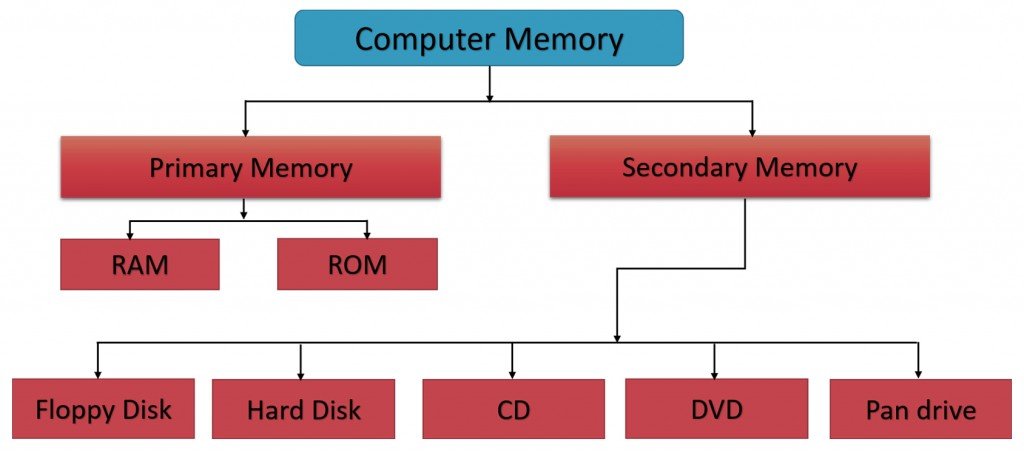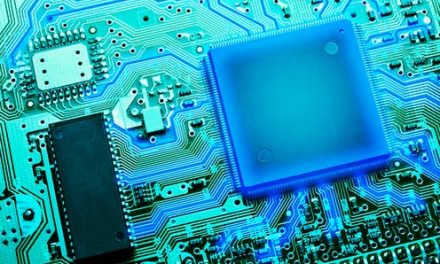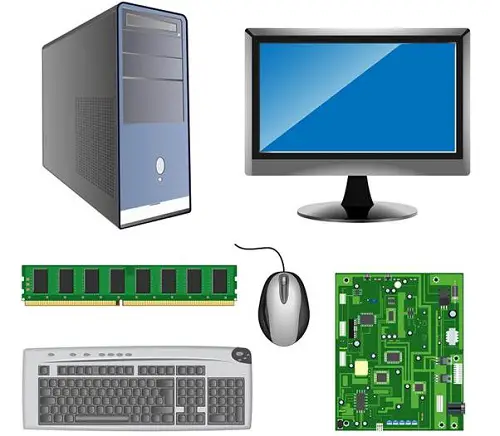Computer memory is central part of what makes computers perform tasks. Understanding what it is and the different types of computer memory is vital in building an understanding of computers and computer systems. In this article we shall be discussing the different types of computer memory. There are different categories of types of computer memory as you will see later on.
Table of Contents
Brief Overview
Broadly, there are two main types of computer memory namely, read only memory (ROM) and random access memory (RAM). Those two broad types branch off into other different types of computer memory. Let us now discuss that in more detail.
Read Only Memory – ROM
This type of memory is deemed non-volatile – as in, it is permanent. This means that it is never lost even when a computer is turned off. One common application of ROM is in embedded systems. A relatable example of a gadget that uses an embedded system is a calculator. Remember, a calculator actually is classified under computers. ROM can keep permanent data worth several gigabytes.
Anyways, ROM is also commonly known for keeping programs especially to do with the operating system (OS). For instance, the boot sequence entails data that is non-volatile and cannot be overwritten just as one would wish. In the event that data has to be written, the process will be very slow. Later on we shall be discussing the various types of ROM – 3 of them actually.
Random Access Memory – RAM
This type of computer memory is volatile – as in, it is temporary. This means it can be lost when power is turned off. Unlike ROM, it can be written over i.e. can be changed. This process of writing data happens much faster as compared to ROM. It is also popularly known as the primary memory or the main memory. It is noteworthy to highlight that the memory capacity of RAM is way less than ROM. Data or programs in the RAM is usually just a matter of megabytes at a time.
Whenever a computer is on and certain processes are running this is the type of memory that will be in use. It basically stores programs and related components that will be in current use at a particular moment. There are 2 different types of RAM we shall be discussing also as we move along.
Programmable Read Only Memory – PROM
As much as ROM is basically read only meaning that it is non-volatile or permanent, it can be changed in some cases. When dealing with PROM is can be changed. Essentially a user can program the read only memory to suit what they want. Once they are done with the programming, the resultant memory becomes non-volatile.
Erasable Programmable Read Only Memory – EPROM
Here it becomes possible to erase for the purposes of programming the ROM again. Thus EPROM is both reprogrammable and erasable. Exposing this memory to UV light constitutes the process of deleting data from the memory. The process of reprogramming requires that you delete all the data from before first.
Electrically Erasable Programmable Read Only Memory – EEPROM
Alright, so you have already seen how EPROM works. Deleting or erasing of data employs the use of UV there. However, the tenets of EEPROM are more like EPROM with the exception of one key distinction. You use an electric field to delete data from EEPROM.
Static Random Access Memory – SRAM
SRAM is made up of circuits which look just like D flip flops. For as long as power is on, what is in the memory is kept and accessible. It is mainly used for as cache memory. This is partly because it is very fast. It does have downsides such as heat generation and an inability to house numerous bits in a chip. The other downside is that it depends on the availability of power without which it cannot operate. The other disadvantage is that it is quite pricey to get.
Dynamic Random Access Memory – DRAM
DRAM is comprised many minute capacitors. In order for the contents of DRAM to be retained, it must be recharged over and over in intervals of milliseconds. It is cheap to get and its main use is as main memory. Unlike SRAM, DRAM can house many bits per chip. DRAM does require power to operate but not as much as SRAM does. Heat generation is also found here but it is minimal. It is generally slow, way slower; actually SRAM is many times faster than DRAM.
Let us now look at another type of categorization of computer memory types – primary and secondary memory.
Primary Memory
Primary memory refers to all that we have been discussing so far i.e. RAM and ROM along with the other types of each. This is type of computer memory normally found on-board a computer.
Secondary Memory
Secondary memory, on the other hand, is normally kept on peripheral storage devices. There are 4 common types of secondary memory namely, HDDs, SSDs, Optical Drives, and Tape Drives.
Hard Disk Drives – HDD
Hard disk drives employ the use of either spinning disks or platters. These are what are used to either read or write data. They are usually constituted of high storage capacities. For example, one hard disk drive can have a storage capacity of 1 terabyte. Hard disk drives are very sensitive to physical damage e.g. if they fall the data contained within can be lost or corrupted.
Solid State Drives – SSDs
Solid drives employ the use of what is called flash memory. They do have high storage capacities but not as much as hard disk drives. They use more sophisticated technology than the hard disk drives and that makes very costly to buy. SSDs can withstand physical damage because they are more compact and lightweight.
Optical Drives
Optical drives entail storage devices such as CDs or DVDs. Reading and writing of data for these employs the use of laser light or electromagnetic waves.
Tape Drives
Tape Drives entail storage devices such as floppy disks and magnetic disks. Here data is read or written on magnetic tapes.
Hopefully you now understand the different types of computer memory.





